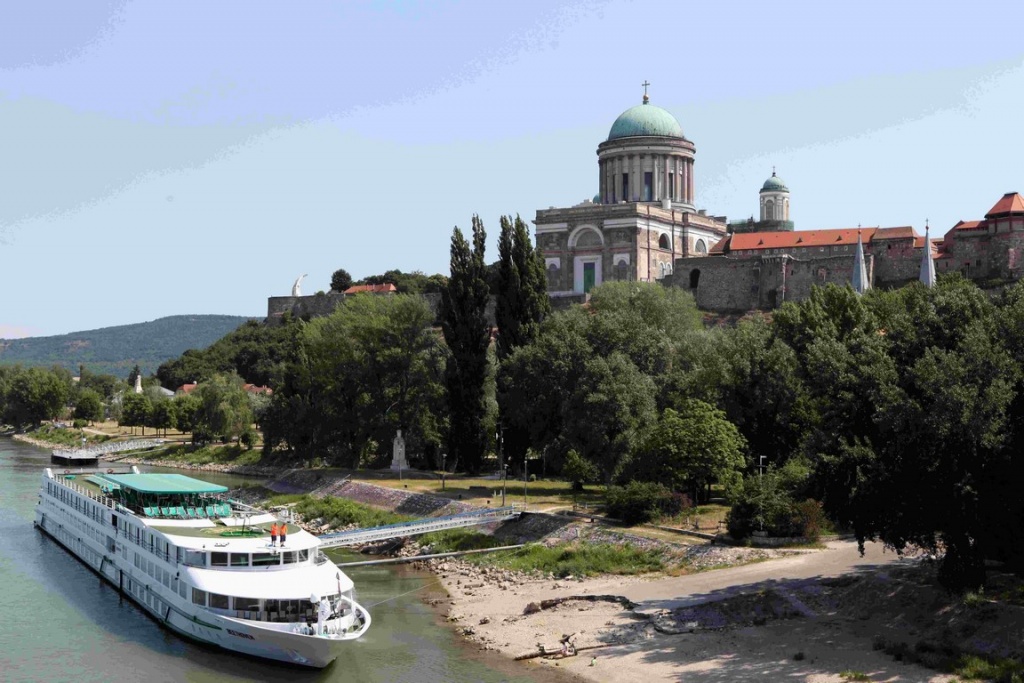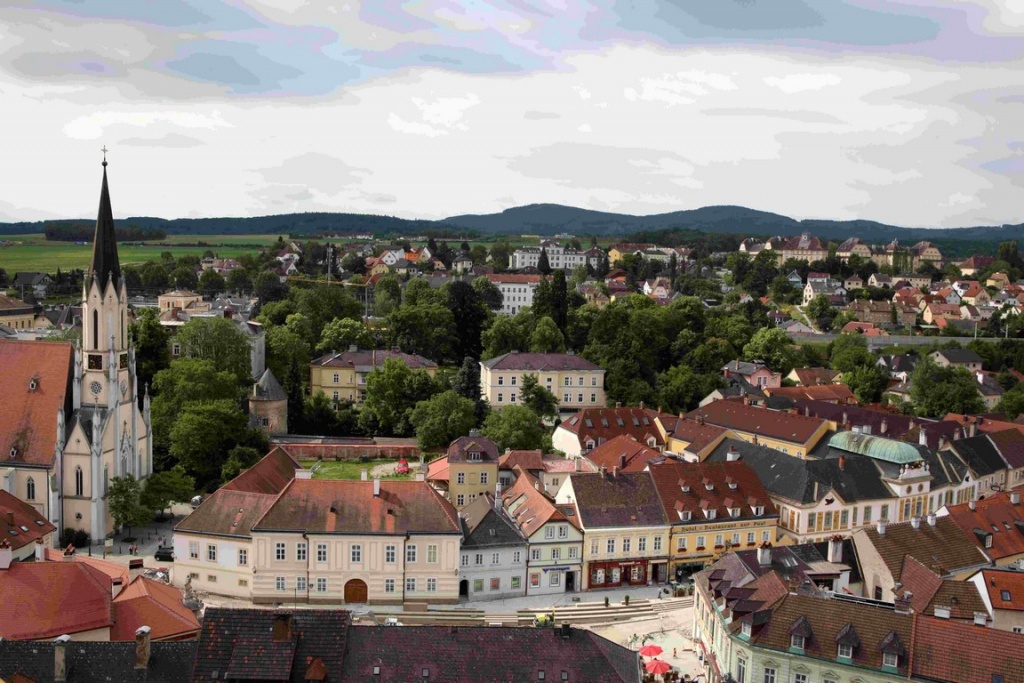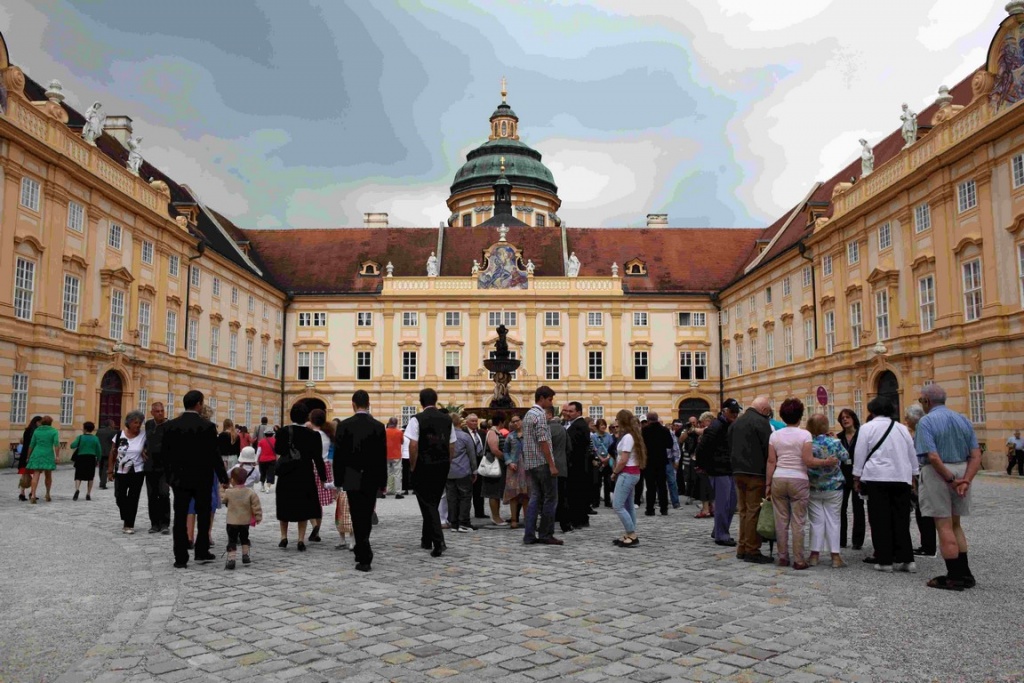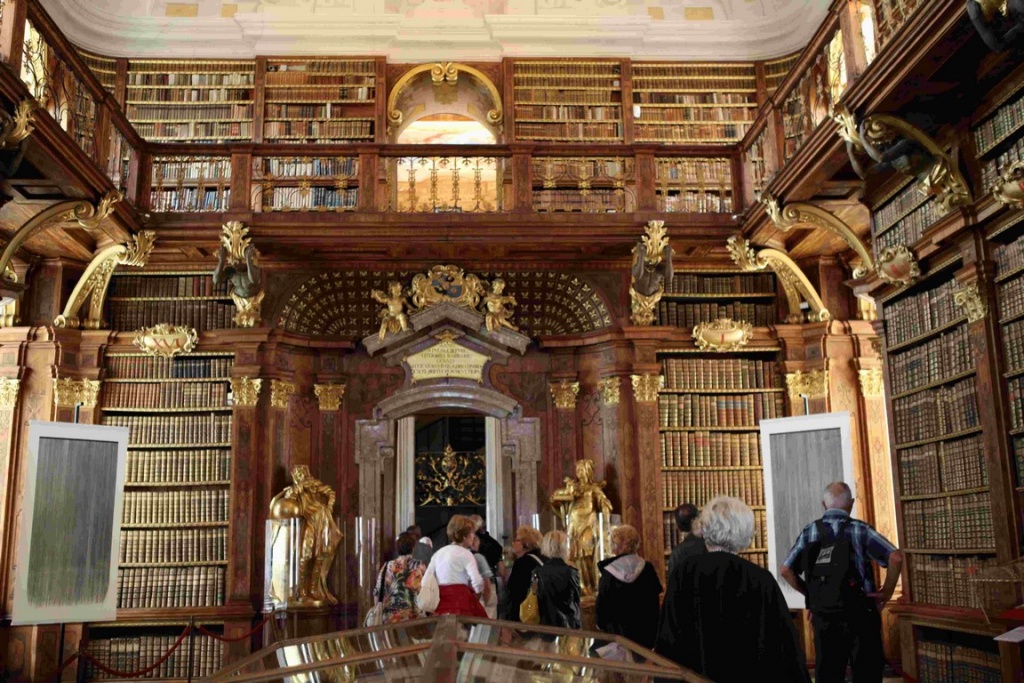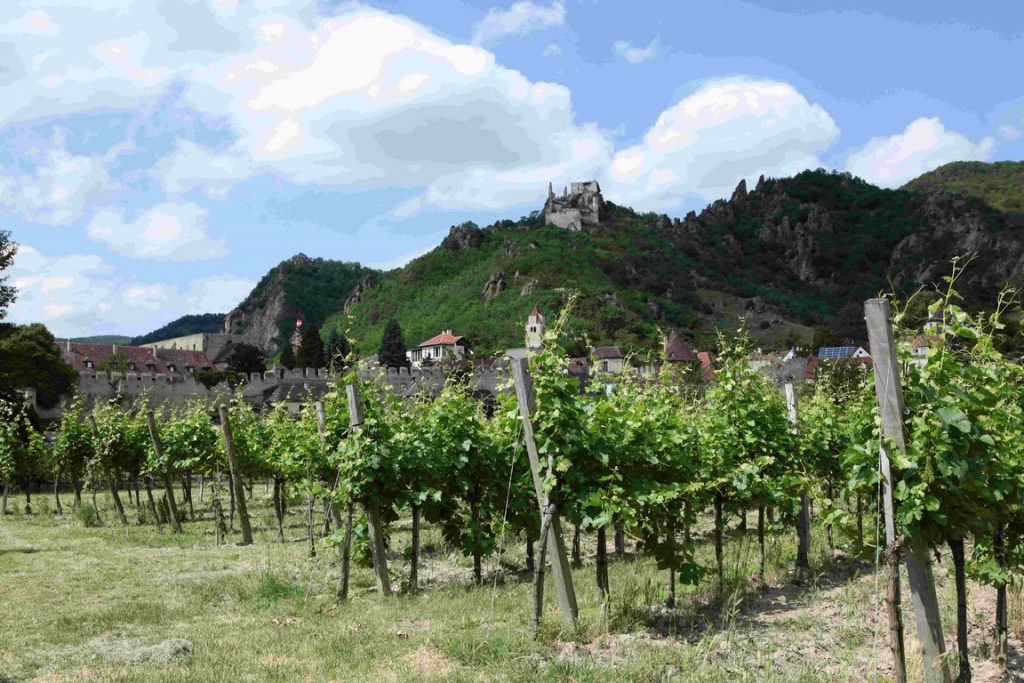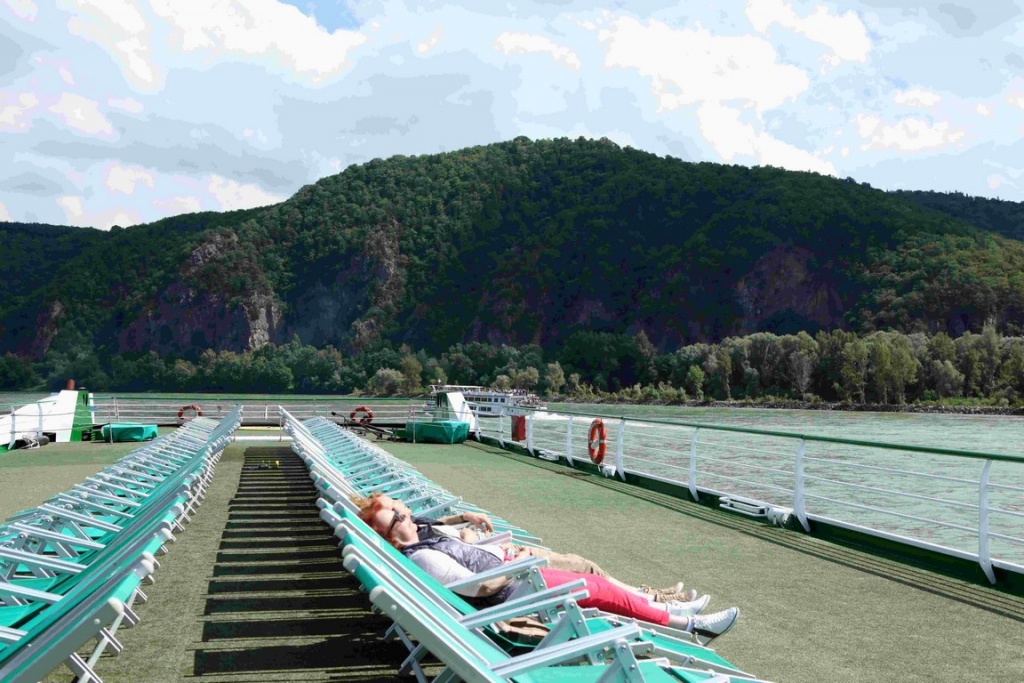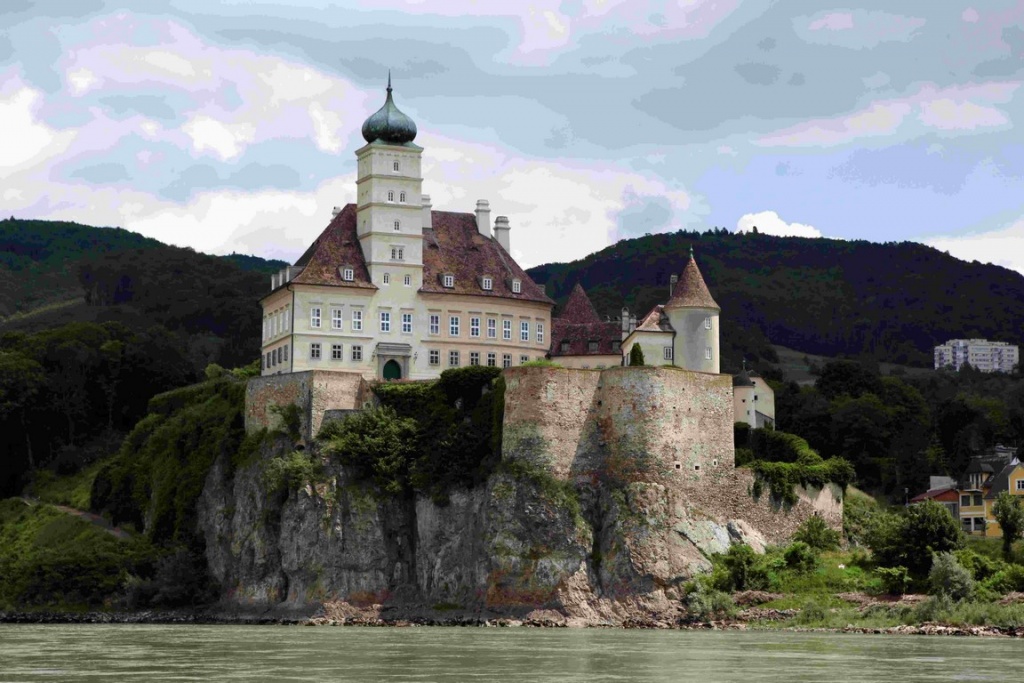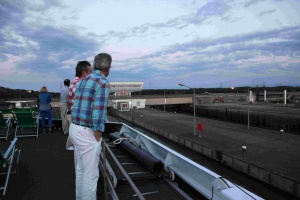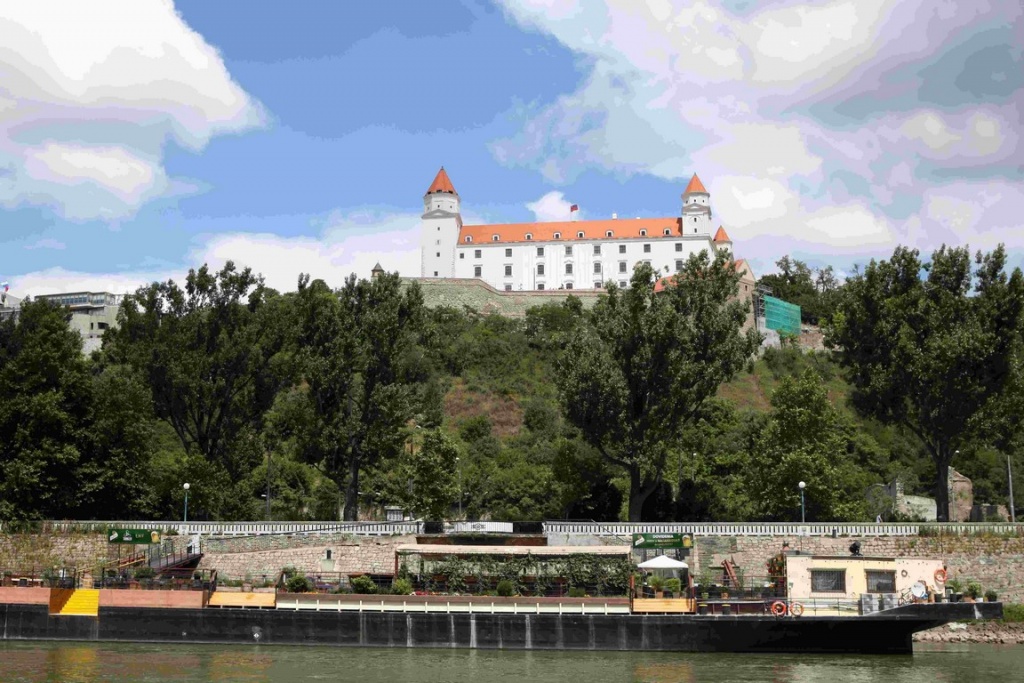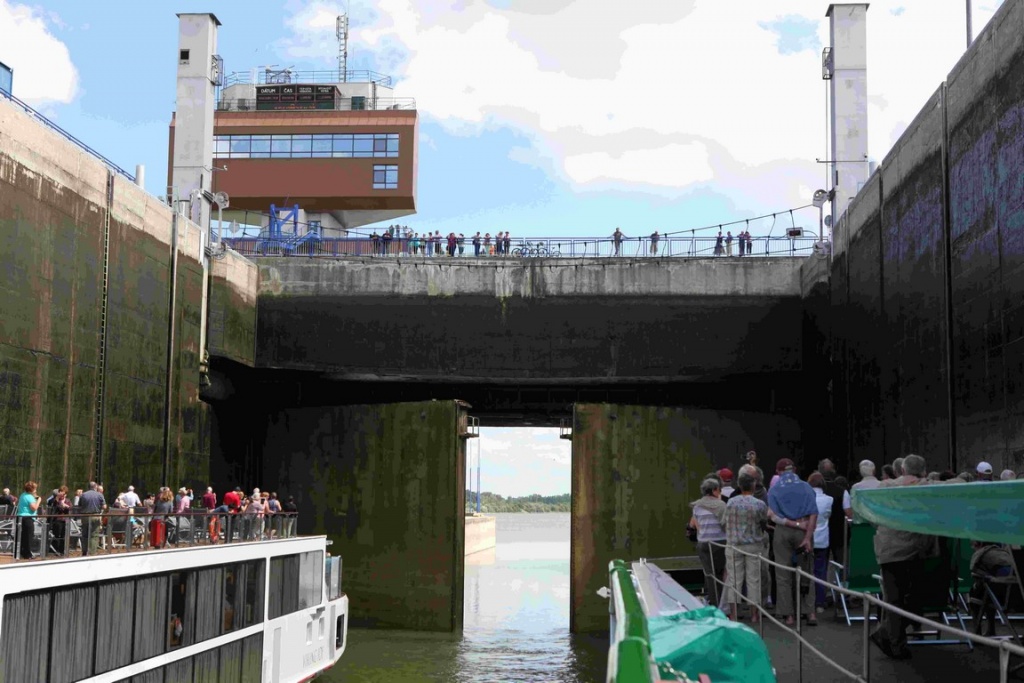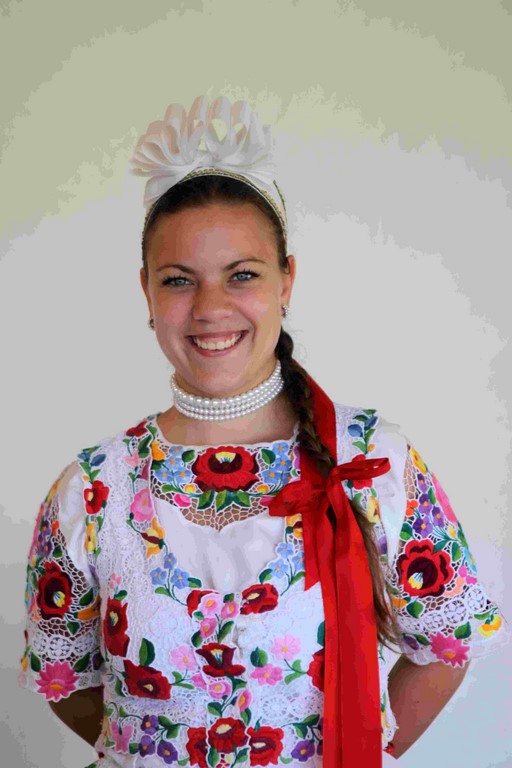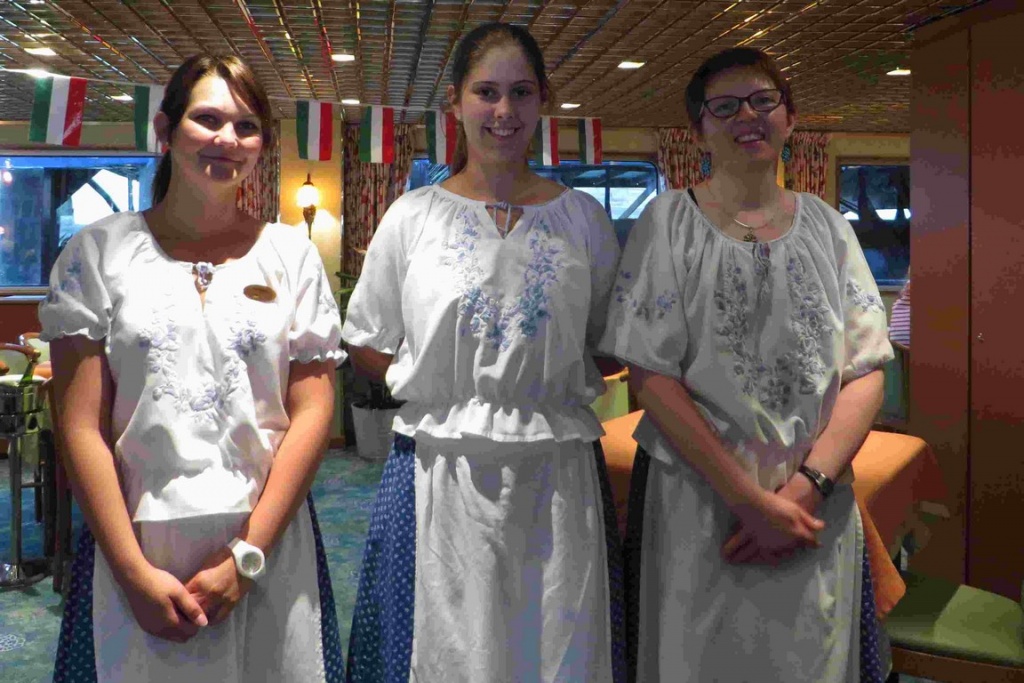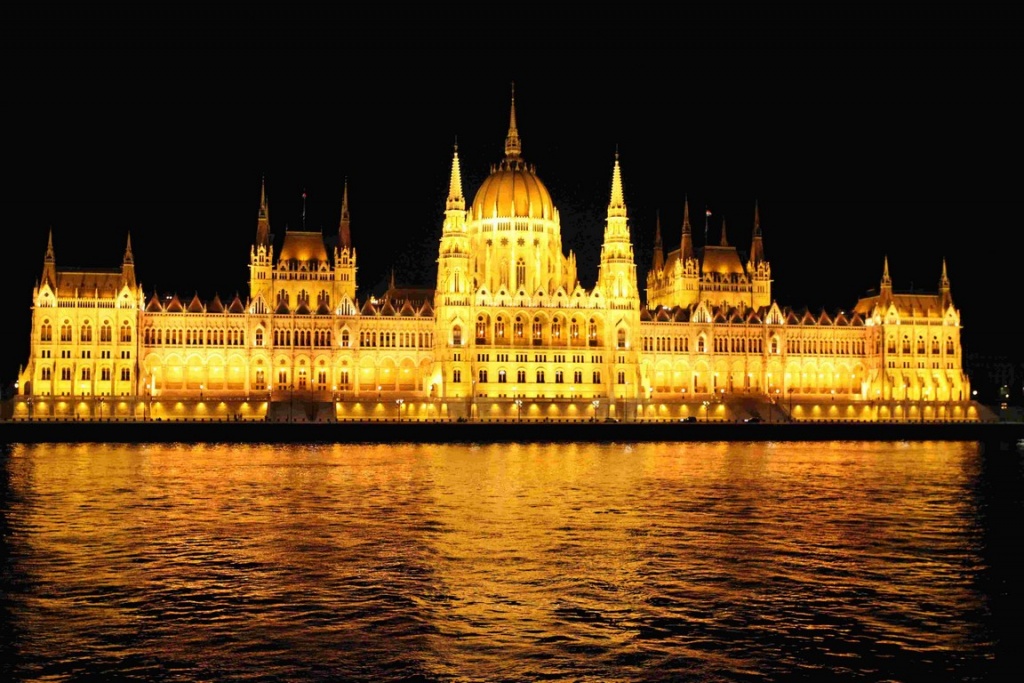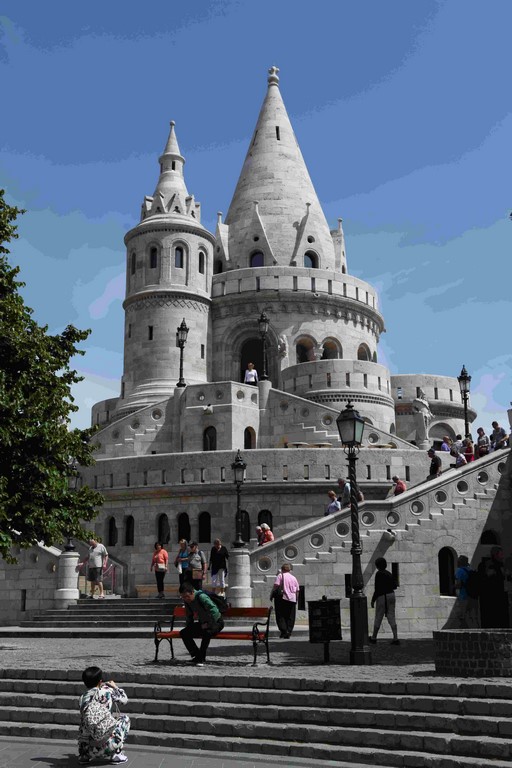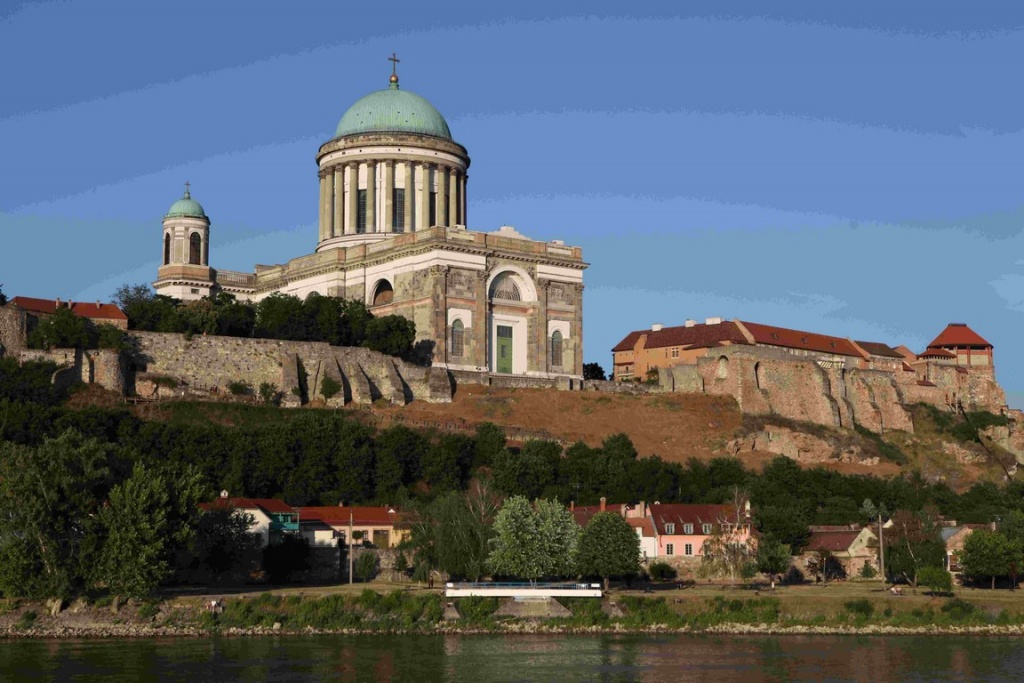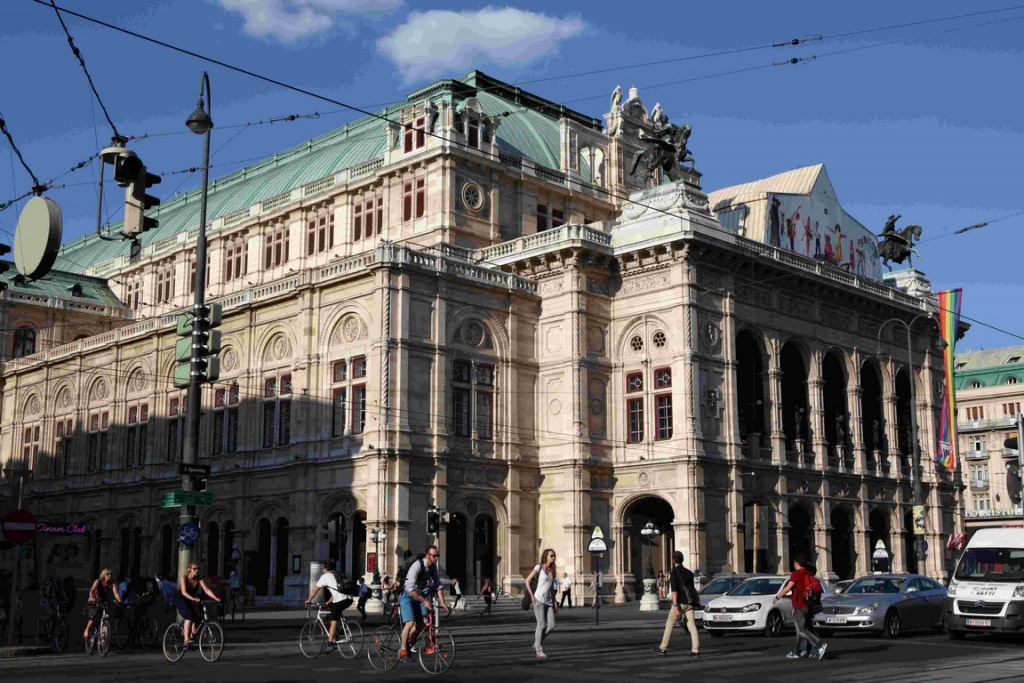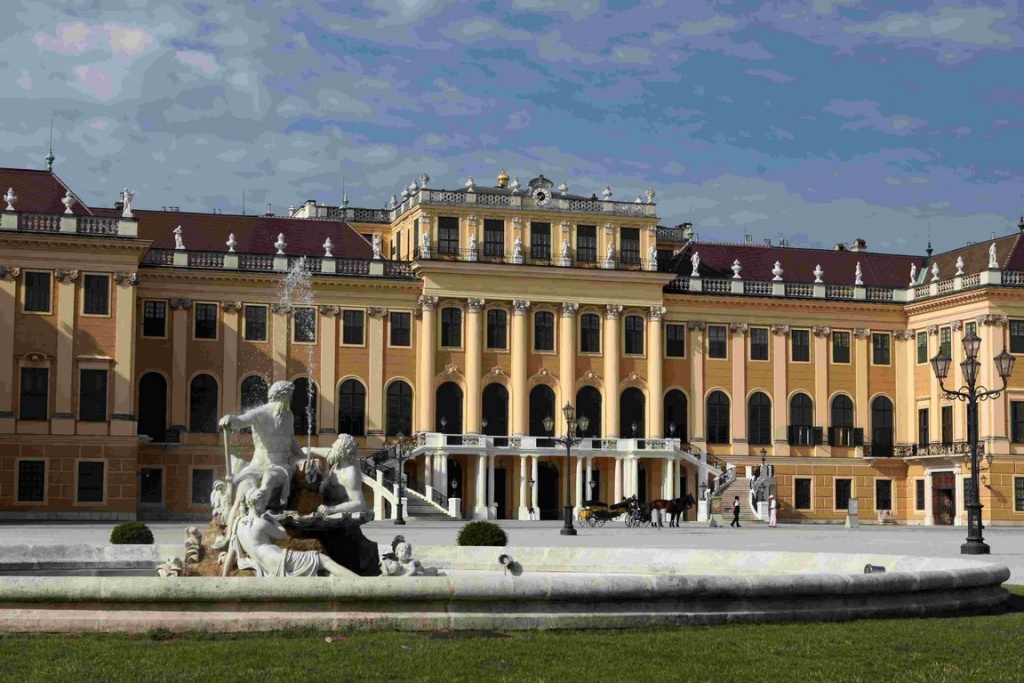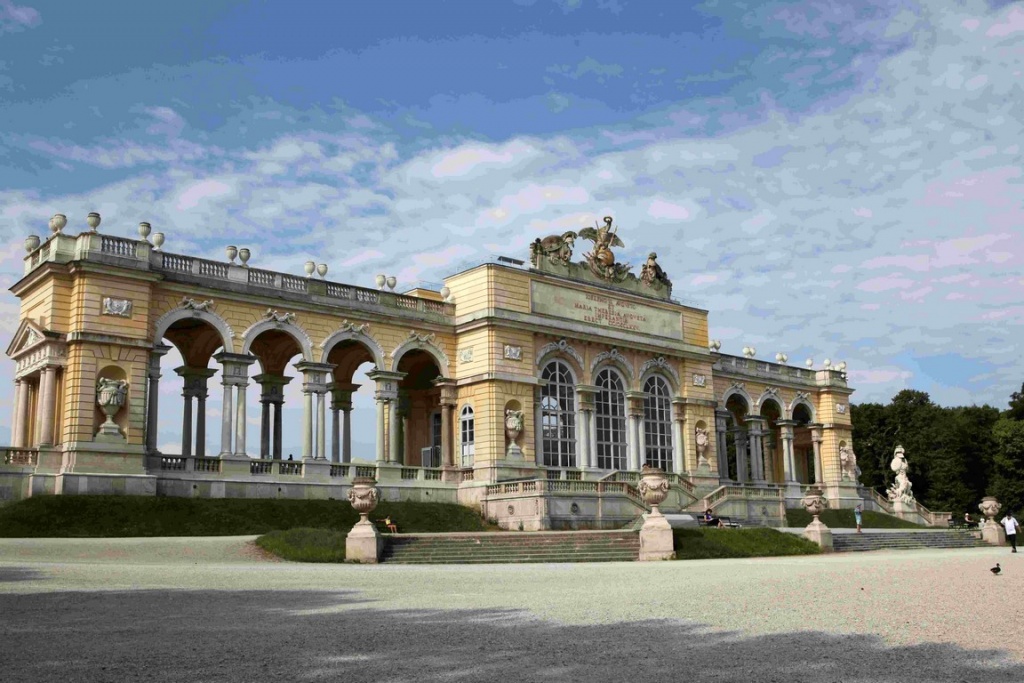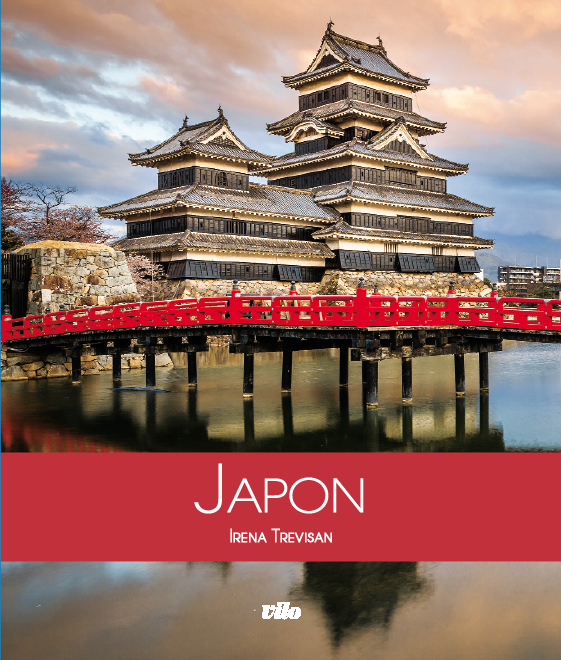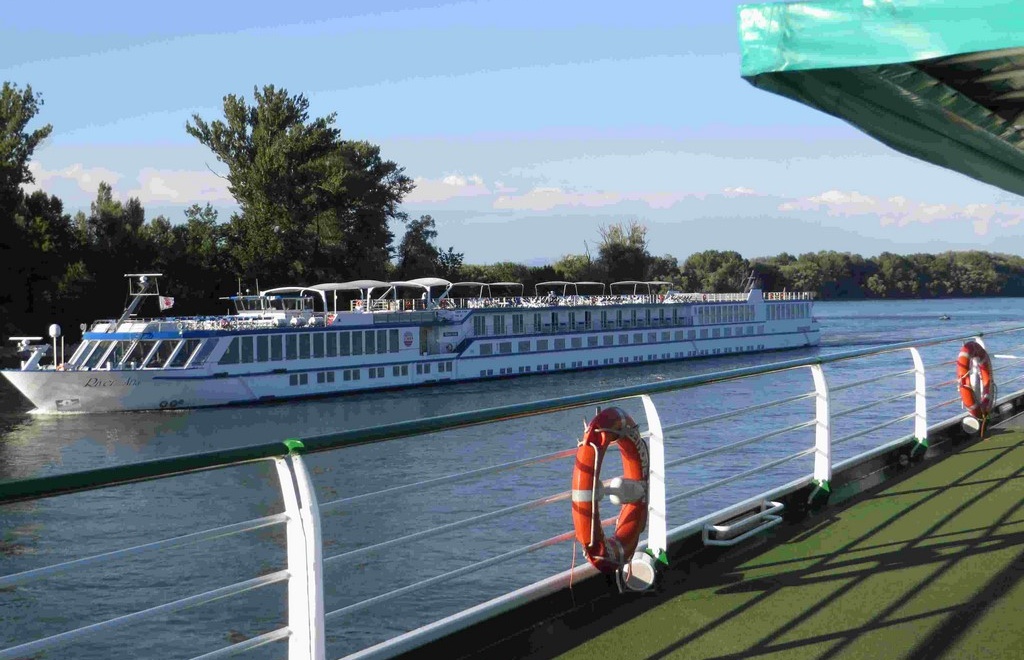
Vienna, Bratislava, Budapest? A cruise on the Danube is the dream trip for romantics, history buffs and anyone who wants to savour the passing of time. Slowly following its course is the best way to discover its many facets and the rich cultural heritage of the cities it flows through. Come aboard the MS Beethoven.
"Blue Danube
Yes, like a god,
We sang to you,
Exalted heart,
It's just your waves,
Laughter or sobbing,
Carrying life and love
All the way!"
Danube? The mere mention of its name is enough to make you imagine yourself twirling in a Strauss waltz. We are in Vienna, the Austrian capital. Yaroslav, purser on board the MS Beethoven, one of CroisiEurope?s superb liners, is welcoming his passengers. Fluent in several languages, Yaroslav has a kind word for everyone as he hands out the cabin keys/cards. Then it's off to the dining room for a welcome cocktail and a presentation of the crew. Meals are served at the table and are inspired by the specialities of the countries we have crossed. On the beautifully laid table, the menu indicates the various dishes on offer. After a pleasant dinner where everyone gets to know each other, the ship is ready to cast off and sail up the river towards Melk, where we wake up to light sunshine after an overnight sail.
Melk, jewel of the Wachau
Melk Abbey is without doubt the best-known and most visited site in the whole valley. It inspired Umberto Eco to write his book The Name of the Rose (one of the heroes is called Adso de Melk).
Considered a masterpiece of Austrian Baroque architecture, this stone vessel stands proudly on a rocky spur on the banks of the river. From a small fortification built by the Romans to a castle under the Babenberg dynasty, Leopold II turned the castle into a Benedictine abbey in 1089. Since then, the monks there have kept alive the memory of Saint Coloman, son of the King of Ireland, who suffered martyrdom in 1012 on suspicion of espionage because his language and clothing identified him as a foreigner. His bones are preserved in the abbey church. Over the years, the miracles of the Saint made the place famous. Considered to be one of the most influential spiritual and cultural centres in Austria, Melk Abbey witnessed a turbulent history - Reformation and Counter-Reformation - from which it did not emerge unscathed. Rebuilt in the early 18th century, the abbey is one of the finest examples of Austrian Baroque architecture at its height. The magnificence of the facades almost makes you forget that you are in a place dedicated to prayer.
Whether it's the richness of the decor or the profusion of ornamentation, even the most demanding visitor can't help but be fascinated by the grandeur on display, whether in the abbey church, the imperial flats (where Napoleon stayed on two occasions during his campaigns), the sumptuous marble hall, or the staircases, particularly the spiral staircase linking the library to the church.
The library is considered to be one of the most sumptuous in the world. Not forgetting the terrace with its superb views over the valley.
In the footsteps of Richard the Lionheart
Over lunch, the boat resumes its journey down the Unesco World Heritage-listed Wachau wine valley to the medieval town of Dürnstein. The vineyards, artistically laid out on terraces supported by dry stone walls, undulate over the hillsides bordering the river. We are in the orchard of Austria, the country where the apricot (Marille in Austrian) is king. Harvested at the end of July, this fruit is at the heart of many culinary preparations, as we will see in Dürnstein. Considered the pearl of this Danube valley, the village is dominated by the ruins of the famous fortress where King Richard the Lionheart was imprisoned on his return from the Crusades.
A footpath leads up to the ruins of the castle, offering superb views over the Danube valley.
At the heart of the village are the Augustinian Abbey and the Stiftskirche. Flanked by its elegant sky-blue baroque bell tower - one of the main emblems of the Wachau region - it is immediately impressive for the profusion and richness of its decor.
The town has retained much of its medieval appearance. The only downside is that it is very touristy; in fact, practically everyone here makes a living from tourism, which is why there are so many souvenir stalls (many of them made in India), local apricot specialities and restaurants.
In the late afternoon, the boat leaves the port for its next destination: Bratislava in Slovakia. Our ship glides gently along this majestic waterway which, in terms of both civilisation and geography, is an unparalleled link between the West and the East. We opted for the Sun Deck, a strategic vantage point for observing river traffic. We pass numerous pleasure boats and barges laden with sand, dragging in their wake all the harshness of the day?s work.
Surrounded by wooded hills and small castles clinging to their sides, the Danube stretches as far as Krems, before spreading further down the valley and dividing into multiple arms around islands planted with willows.
In truth, the Danube is not as blue as the operetta suggests. In the Austrian part of the river, the water is a deep, dark green, reflecting the foliage that drowns in it. Lounging on deckchairs, a group of former students from one of the great schools chat happily, a glass of chardonnay in hand. While other passengers rediscover the boredom they had hoped to leave at home. As evening falls, we reach the Altenwörth lock, an impressive structure (230 m x 24 m) that has passengers crowding the bridge.
During the night sail, we will pass the equally imposing Greifenstein.
Under the spell of Bratislava
The former Presburg, capital of Slovakia since 1993, has a charming provincial air and an old town punctuated by Austrian, Hungarian, Czech and, of course, Slovakian influences. The 9th-century castle was partly burnt down in a fire in 1811 and rebuilt in its original form in the 1960s.
From the top of the hill where it is perched, you can enjoy a beautiful view of the Danube and of a city that wasn?t very glamorous during the Communist years: Petrajalka, Europe?s largest dormitory town. We only have a few hours to wander through the narrow streets of the old centre and discover its pastel-coloured houses and Baroque churches. On the square in front of the French embassy stands a statue of a Napoleonic soldier. Is this a Slovakian joke to remind us that Napoleon's armies fired cannons at the city to open its doors to them? On the Place Primatiale, you can admire the former bishop's palace, now the Bratislava town hall, which houses the famous Hall of Mirrors where, in 1805, the Peace of Presburg was signed between France and Austria, three weeks after the Battle of Austerlitz. A magnificent classical building, it adjoins the city's oldest edifice: the 14th-century town hall, with its paved courtyard surrounded by arcades, which houses the city museum.
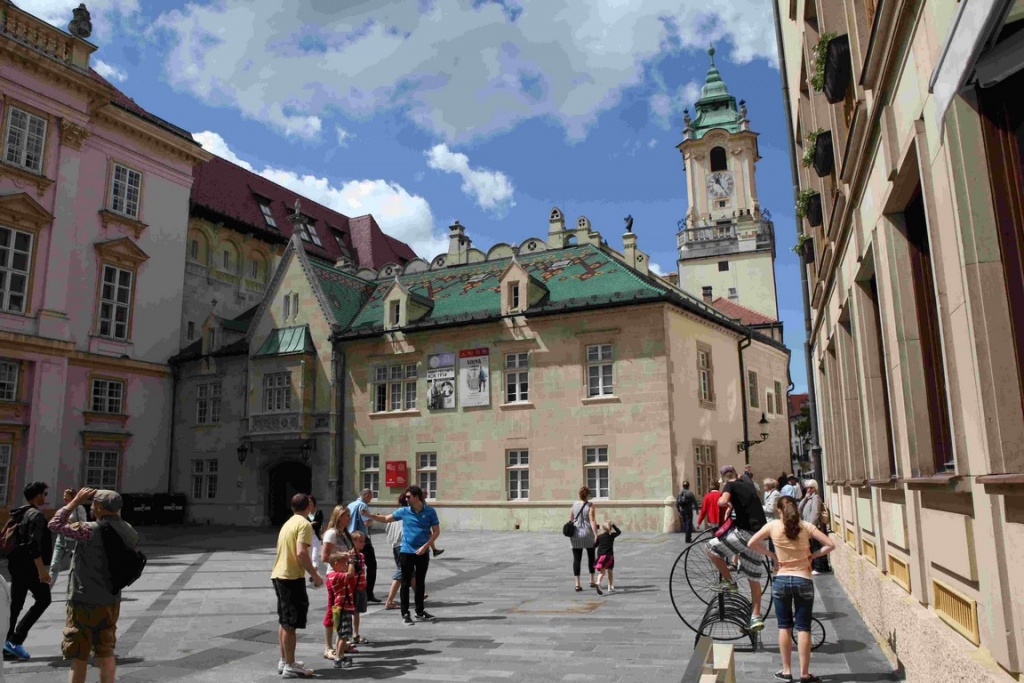
Bratislava Town Hall is a fascinating mosaic of different styles, with the oldest part dating back to the 14th century.
Finally, let?s not forget to salute the figure of Cumil, better known as "Man at work". This unusual statue with a mischievous smile, created by Victor Huli?k in 1997, is as popular with tourists as it is with locals.
Back at the boat, we set off on a long sail towards Hungary, which we reached the next morning. It is here, a little downstream of the Morava, that the real Hungarian Danube flows. "It takes on the appearance of a great river, after having been little more than a river in its crossing of Austria", noted Jules Verne in The Secret of Wilhelm Storitz. Winding its way through low-lying terrain, the river widens out to form countless islands and shoals where numerous tree trunks are washed up. Its banks are ever-changing, with the current sometimes eroding them and sometimes adding alluvial deposits. Most of the Danube is then channelled on the Slovakian side between high dykes that frame a river that is now 500 metres wide, tamed and calmed by powerful dams with locks up to 20 metres high. The Gabcikovo lock, for example, is 280 metres long and 34 metres wide, and allows 6 cruise ships to pass from one reach to the other at the same time.
After the lock, you glide slowly between densely wooded natural banks. A few fishermen?s cottages and cosy little houses, mounted on floating barges to cope with the sometimes high water, welcome families at weekends.
At the crossroads of East and West
" The Orient begins at the gates of Vienna "Metternich said of Hungary. It is true that this country, which is three times the size of Belgium, resembles Austria in some respects (which occupied it for some fifty years), while at the same time opening the door to another world with oriental resonances. The Turkish occupation left Hungary with a taste for coffee, paprika, baths and even a few mosques.
As it enters the Upper Hungarian plain between the last foothills of the Alps and the Carpathians, the river is 292m wide and around 6m deep. To its left, the river is swollen by the waters of major tributaries from the Carpathians, such as the Vah and the Neutra; to its right, the Alps send the Leitha and the Raab; countless small branches of the river wind through the countryside and flow into the Vah, the Leitha and the Raab, which in turn flow back into the Danube, forming large islands that are themselves divided into small islets.
We start our Hungarian journey with a stopover in Kalocsa, a town of 18,000 inhabitants on the left bank of the Danube, 110 km south of Budapest. Nicknamed the city of paprika, Kalocsa is also famous for its embroidery, which the local women have elevated to an art form. The embroidery can be seen in the form of multicoloured bouquets on the skirts and blouses of the local belles.
A bus takes us to the Puszta, a vast expanse of plains and marshland. The traditional use of the land for grazing domestic animals has been perpetuated here by a pastoral society for over two thousand years. At one of the farms, you can watch a horse show led by "csikós", the famous Hungarian horsemen.
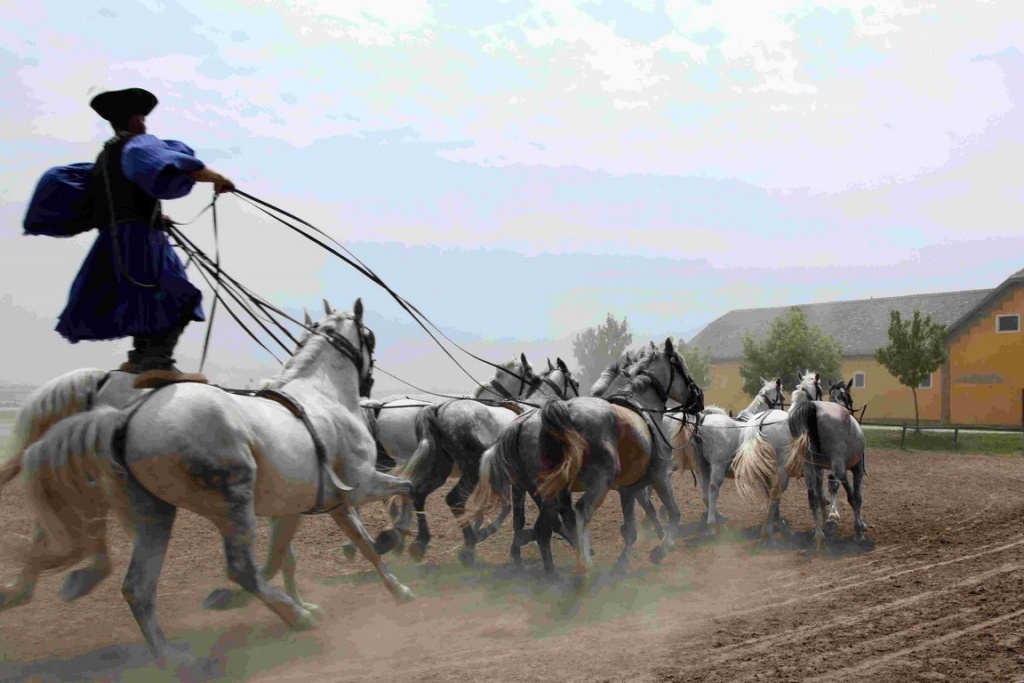
The csikos are the inventors of the famous Hungarian post: a rider leads a team of six or even ten horses, standing on the rump of the last two.
We are welcomed with brandy, called "pálinka", and some pastries. After the show, participants have the opportunity to take a wagon ride around the puszta and discover the horses and other farm animals. In October, tens of thousands of grey cranes can be seen flying over the meadows of its green pastures.
Returning to the boat for a long sail to the Hungarian capital, we saw images of the Csikos, descendants of the Magyar warriors from the Urals and the Volga, who took over this immense territory to breed the Nonius in semi-freedom, the original Norman half-bloods stolen from Napoleon?s troops during the retreat from Russia.
A gala dinner, served by waiters and waitresses in traditional Hungarian costume, awaits us (in every country we visit, the restaurant staff adopt the local costume).
The menu includes a delicious goulash and a Dobos torta, a famous chocolate cake with a caramelised top. All washed down with the local red wine known as "sang de taureau" (bull's blood).
Budapest, queen of the Danube cities
Budapest is undoubtedly one of the most beautiful capitals in Central Europe. In any case, the most illuminated. As you cruise along the Danube at night, you can?t help but be dazzled by the lights, which give the city a very poetic feel. Start with the neo-Gothic Parliament.
Its rooms house the crown of the former kingdom of Austria-Hungary. A symbol of its heritage, the Chain Bridge, the first permanent bridge and one of the wonders of its time, is spanned by two triumphal arches and guarded by two stone lions at each head. It has linked the banks of Buda and Pest since 1849.
Formed from three conurbations ? Buda, Obuda and Pest? at the turn of the 18th and 19th centuries, the city was transformed into a single metropolis. Born from a fortified Roman camp on the Danube limes (fortifications established along some of the borders of the Roman Empire) ? Aquincum? the city was successively Roman, Avar (a Turkish tribe), Slavic, Magyar, Mongol, Angevin, Ottoman and Habsburg! In 1873, the capital of Hungary, in the administrative sense of the term, was born. Unification encouraged its development, with neo-Renaissance palaces, art nouveau hotels and neoclassical theatres all blending into the romantic backdrop of the surrounding hills and its king river.
At the foot of Buda Castle, the Gellert Baths, an Art Nouveau jewel, are nestled in a sumptuous palace. The only capital city in the world to have thermal springs, the city boasts a number of thermal baths, some of which date back to the Ottoman era, such as the Rudas and Széchenyi baths.

The neo-renaissance Széchenyi Baths are one of Europe's largest bathing centres and Pest's first thermal baths.
The baths are a real part of everyday life in Budapest. A diversion to one of these inexpensive baths is a pleasant way for tourists to get a real feel for the country! From the Fishermen?s Bastion, a neo-Romanesque fortress, we admire the view over the Danube, before reaching Matthias Church, the site of royal coronations.
The royal castle had its heyday with Mathias Corvin. It was completely rebuilt by the Habsburgs on the remains of the Angevin castle, which were discovered during the bombardments of the Second World War.
Esztergom, first capital of the Kingdom of Hungary
One day is not enough to see all the wonders of Budapest and soak up its fascinating atmosphere. But Esztergom, the country?s former capital from the 10th to 13th centuries, is waiting for us. It lies some sixty kilometres from Budapest, at the end of the bend in the Danube that forms the natural border with Slovakia. Dunakanyar, or Donauknie in German (the knee of the Danube) is the Hungarian word for the bend in the river after Esztergom, when it turns due south towards Budapest. The birthplace and coronation place of Szent István, the first Christian king of Hungary (baptised in 1001), this town, which holds a special place among Hungarian cities, is also the seat of the country?s Catholic Church. The basilica, inspired by Saint Peter's in Rome and built in the style of the Italian Renaissance, is considered to be the most beautiful church in the country.
Vienna, capital of the Holy Roman Empire
The boat continues up the Danube for its final stop: Vienna. Playing with the splendour of its imperial glory, the Austrian capital boasts the finest collection of historicist architecture in the world. Greek temples, neoclassical colonnades and Art Nouveau facades coexist without complex. The Ring (circular boulevard) protects the memory of Vienna, which has largely merged with that of the Habsburg dynasty.
We begin our visit at Schönbrunn Palace, a UNESCO World Heritage Site since 1996.
This palace, which claims to be the Austrian Versailles, is of undeniable interest. The personality of Emperor Franz Joseph I of Austria is inextricably linked with this castle, as is that of his wife Empress Elisabeth, better known as Sissi. Sissi has left such an indelible mark on little girls? imaginations that, as adults, they come here to be photographed on her grand staircase in their wedding dresses. Surprising, given that Elisabeth of Wittelsbach was a free spirit who didn't much care for ceremony and pomp. Many historical events are recalled here: the childhood of our own Marie-Antoinette, Mozart, Napoleon 1st, Austerlitz (1805), Wagram (1809) and then the Congress of Vienna (1814), which saw the temporary triumph of Metternich. The Duke of Reichstadt (l'Aiglon) stayed here and died. Inside, the rococo style so dear to the Empress predominates. As for the gardens, they are perfectly laid out. The gloriette, perched on the hill opposite the palace, is well worth a visit.
Built in 1775 by Ferdinand of Hohenberg, it commemorates Maria Theresa?s victory over the Prussian armies of Frederick II. A severe blow to the Kaiser?s honour and misogyny. Since 1996, the Gloriette has been home to a café in the purest Viennese tradition.
But Schönbrunn was only meant to be a summer residence. Vienna?s castle, that of the Habsburgs, was the Hofburg, the political centre of the monarchy. Today, the Hofburg continues to fulfil this same function. It is home to numerous cultural institutions in this extravagant architectural complex comprising 19 courtyards and 18 wings: from the Spanish Riding School to the Austrian National Library and the Sissi Museum. In short, an afternoon is far too short to see it all.
We'll end our Viennese stroll with a break in the alleys of the Naschmarkt, the best district for gauging the city's very Mitteleuropa cosmopolitanism. With around 120 stalls, bars and restaurants, Vienna's oldest market attracts young and old alike every evening for a beer and a bite to eat. When can you find room?
This article appeared in issue 250 of Fluvial magazine: www.fluvialnet.com
Text and Photos: Brigitte Postel
Advice
Pearls of the Austro-Hungarian Empire
Croisieurope is offering an 8-day cruise (port to port) departing from Vienna and visiting the main cities of the Austro-Hungarian Empire: Vienna, Melk, Dürnstein, Budapest, Esztergom and Bratislava. From Baroque palaces to monasteries, this is a journey of discovery into the intimacy of Europe, and a journey along its second largest river after the Volga: the Danube. A mirror of the Holy Roman Empire, the cities along its banks bear witness to its rich history. This beautiful navigation reveals a river of varied landscapes that meanders through vineyards and green hills dotted with small castles and monasteries, before flowing into the alluvial forest where many wading birds nest.
The ship - MS Beethoven - can accommodate 180 passengers on three decks. Renovated in 2010, the ship has a 180-seat lounge with dance floor, pianorama bar, dining room, large sun deck with deckchairs, boutique and lift. As soon as you step aboard, you will be seduced by the comfortable, friendly atmosphere, charm and authenticity of this carefully decorated boat. The cabins are spacious and the English- and French-speaking staff very attentive. As well as the optional excursions, there are plenty of activities on offer. From €1,045. Tel: 08 26 10 12 34
http://www.croisieurope.com/croisieres/les-perles-de-lempire-austro-hongrois-2014
When should you go?
The best time to take a Danube cruise is between March and October. During this time of year, the sun shines and the temperature remains pleasant.
Read
Cruise on the Danube 2014 Petit Futé (with photos and readers' comments)
Aimed at all short-stay travellers looking for a comprehensive guide at the best price. Richly illustrated, this guide focuses on cultural information and discovery. It is the ideal companion for understanding the country and making the most of your stay. You'll find all the addresses and tips you need to make the most of your stay.
DanubeClaudio Magris, Folio Gallimard.

